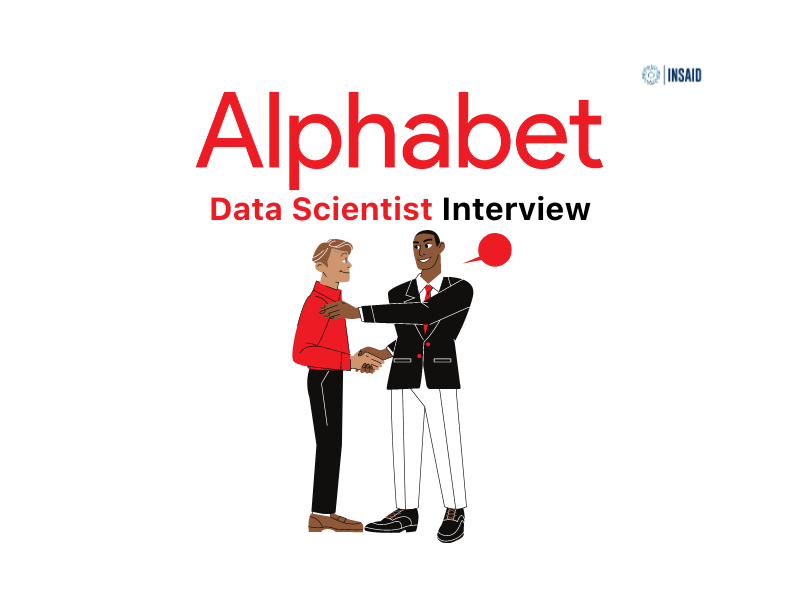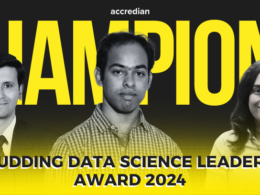Alphabet is a parent company of Google that offers performance advertising. This allows advertisers to connect with their users with measurable results. This results in the generation of huge data that Alphabet as a company has to handle and regulate on a daily basis. For this very purpose, Alphabet needs Data Scientists.
What do Data Scientists at Alphabet inc. do?
Data Scientists at Alphabet work across teams, features and products, from enhancing advertising efficacy to network infrastructure optimization.
The Alphabet Data Science role is majorly an analytics role that is focused on metrics and experimentation. This is distinctly different from the Machine Learning and Product Analyst roles that also exist at Alphabet, which focus more on the product side.
Alphabet only hires individuals who are experienced with at least 2-3 years of work experience in Data Science or its related fields.
What are the relevant skills that are required for a Data Scientist role at Alphabet?
- Masters/PhD in Operations Research, Statistics, Bioinformatics, Engineering, Applied Mathematics, Economics or equivalent practical experience.
- Advanced experience in statistical software like Panda, SAS, MATLAB, etc.
- Advanced experience in programming languages like Python, R, C++ and Java.
- Experience in SQL, Big data and clouds in order to apply large scale data solutions.
- Advanced knowledge of statistical concepts and applied experience with machine learning on large datasets.
- Experience in problem-framing, problem-solving, project management and people management skills.
Pro Tip: Alphabet tests heavily on Statistics & A/B Testing and Machine Learning during their Data Scientist interview process. Make sure to practice on these before the interview.
The Alphabet interview process
There are 3 stages of interviews that take place after you are shortlisted which are Phone interview, Technical interview and an Onsite interview. Let’s explore these stages in a little more detail.
Stage 1- Phone interview
This stage is an interview with the recruiter over a phone call. Here you will be asked basic questions about your resume, past experiences, expectations and maybe simple technical questions. This is also where you will get the complete idea of the role and your position in the company.
The recruiter is mainly trying to figure out your career goals and see how they align with Alphabet’s culture and values along with the different teams that they can place you in.
Pro Tip: Make sure to clear all your doubts with the recruiter for you to move forward in a well planned manner.
Stage 2- Technical interview
The second stage is focused on how well you stand out from the rest in terms of your technical knowledge and practical skills.
You will be given questions based on probabilistic coding, statistics and experimental design. This stage will also involve technical discussions that deeply focus on your past projects and work experience.
The interviewer dives into what problems you might have faced and what your approach was.
Pro Tip: Make sure to explain your projects in detail and try to answer all doubts as efficiently as possible.
Stage 3- Onsite interview
The final stage is an onsite interview that takes place for the whole day. Here each candidate is subjected to 5 interviews with experts from different teams. They are mostly team leads, Data Scientists, managers and HR professionals.
Here you will be tested about your knowledge of modeling, probability, product interpretation, metrics and experimentation. Lastly you will be given behavioural questions that analyse how well you fit with Alphabet’s work culture.
 Pin
Pin20 interview questions that you must practice
Here is a list of questions that might help you prepare for the interview:
EASY
- What is Gradient Descent?
- What is KNN?
- What are the various types of classification algorithms?
- Name different Deep Learning Frameworks.
- What is Deep Learning?
- What is data visualization?
- What is DBSCAN Clustering?
- What is the main difference between supervised and unsupervised machine learning?
- What is Ensemble Learning?
- What is the usage of natural language processing?
INTERMEDIATE
- What is Systematic sampling?
- Tell me the method to convert date-strings to time series in a series.
- What is the importance of Sampling?
- What is an Eigenvalue and Eigenvector?
- Name some of the prominent resampling methods in Data Science.
- What is the difference between a bar graph and a histogram?
- What is imputation? List the different types of imputation techniques.
- What is selection bias, and how can you avoid it?
- What happens if two users access the same HDFS file at the same time?
- What is ‘cluster sampling’?
HARD
- How will you explain linear regression to someone who doesn’t know anything about Data Science?
- Is it possible to stack two series horizontally? If yes then how will you do it?
- Which technique is used to predict categorical responses?
Hopefully this was insightful for you. Please check out our other blogs here.







